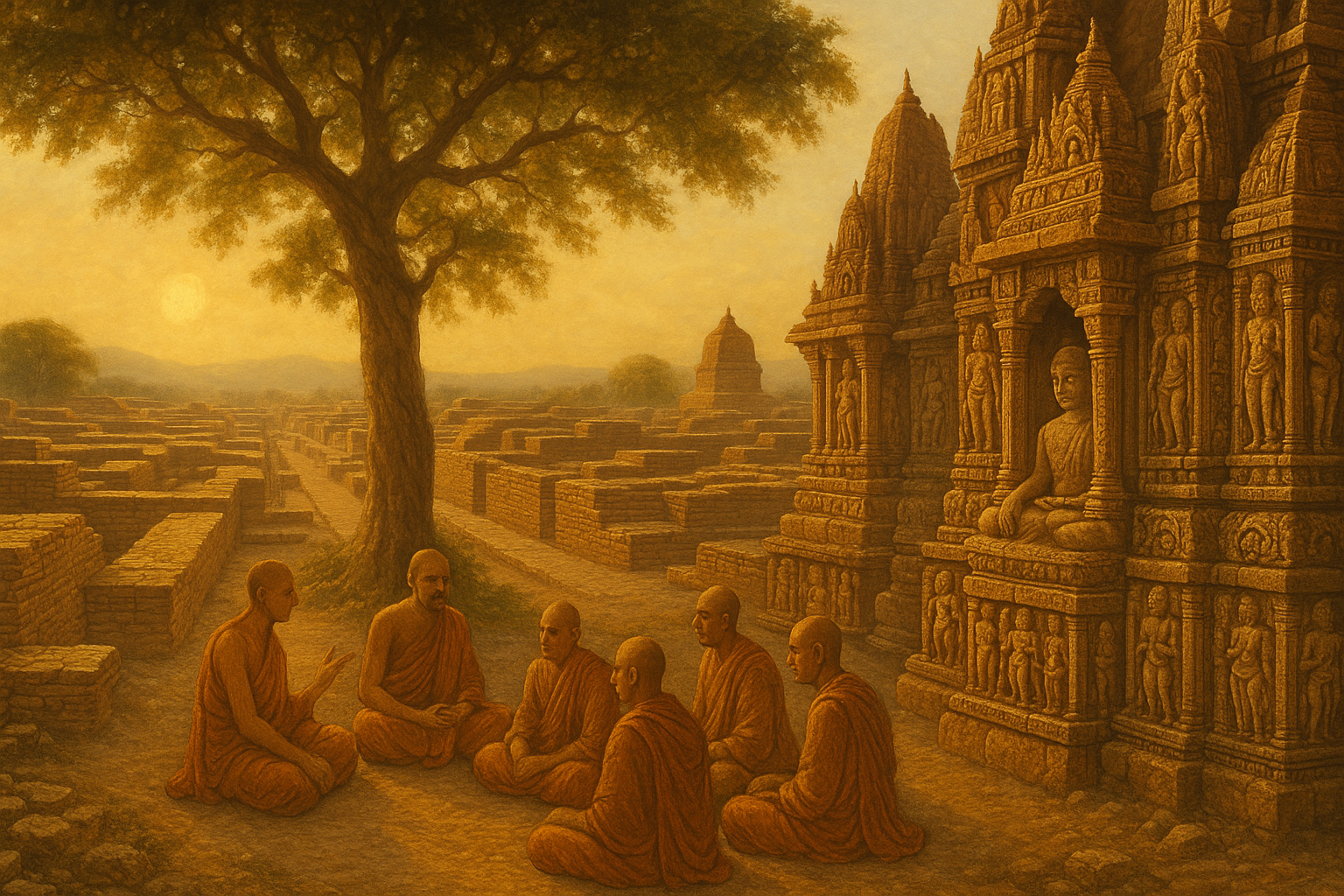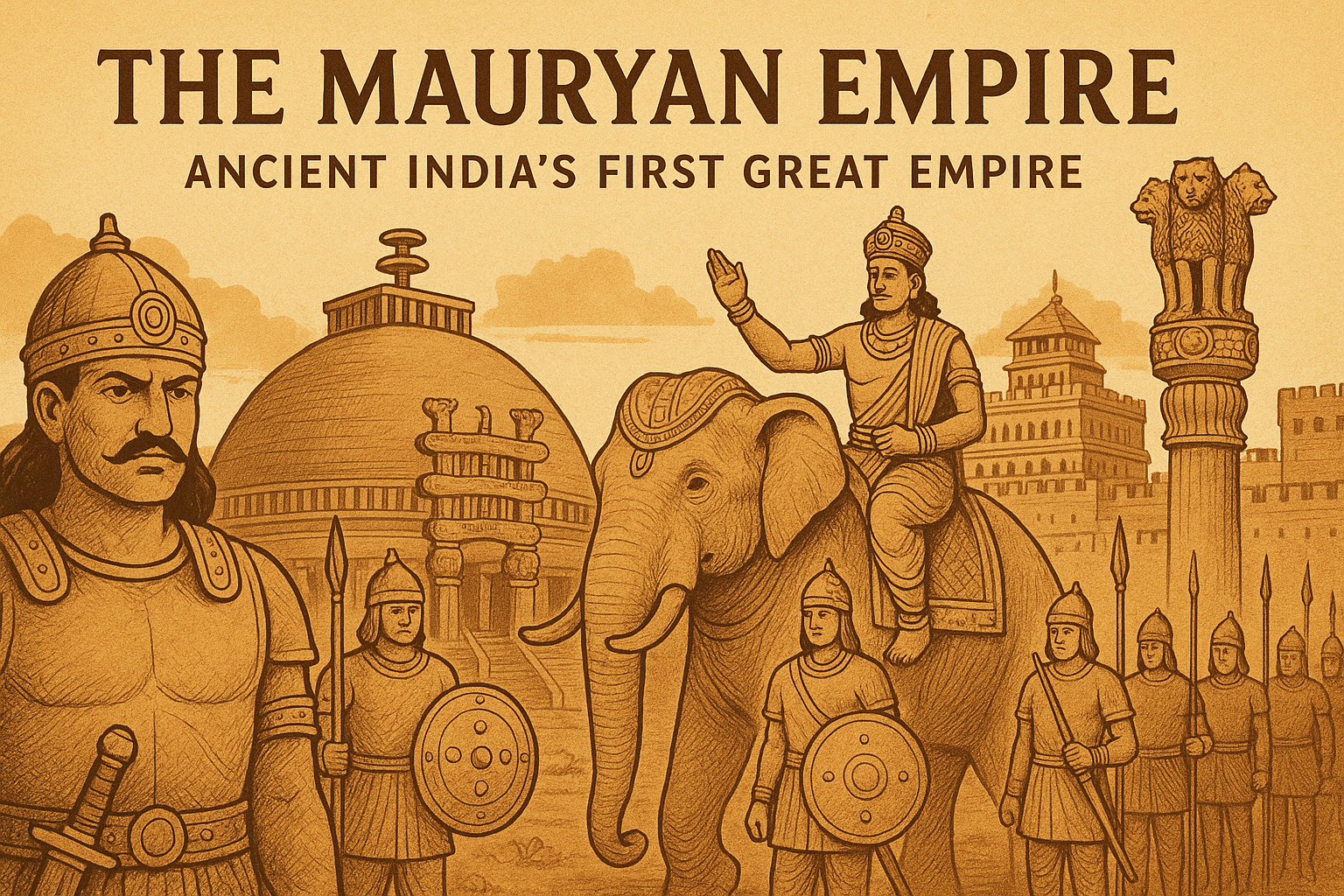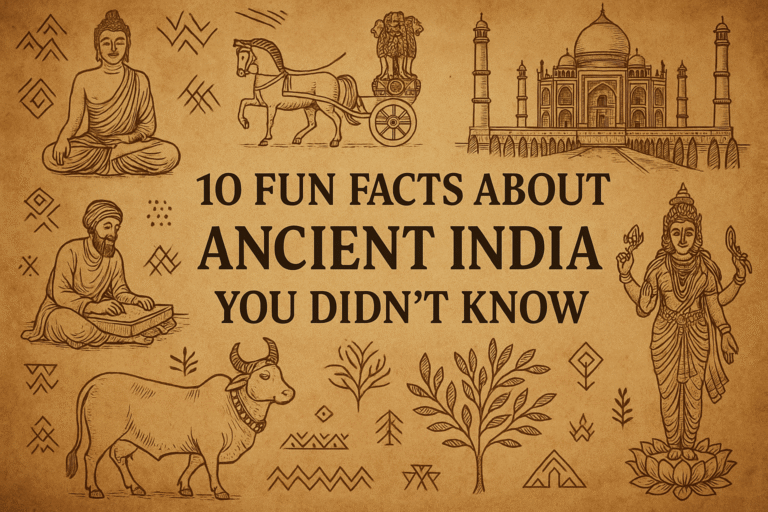<meta name='impact-site-verification' value='34369dc5-877c-4282-90a9-36f86721ccfa'>
Ancient India: A Complete Guide to Its History and Culture
Ancient India represents one of humanity’s most remarkable civilizations, spanning over three millennia of continuous cultural development. From the sophisticated urban centers of the Indus Valley to the intellectual achievements of the Gupta period, Ancient India civilizations laid the foundation for many aspects of modern society. This comprehensive guide explores the major periods, achievements, and cultural contributions that defined Ancient India from approximately 2600 BCE to 550 CE.
Understanding Ancient India requires examining its diverse geographical landscape, from the fertile Indus River valley to the Gangetic plains, which shaped the development of distinct civilizations. Archaeological evidence, ancient texts, and inscriptions provide crucial insights into these societies, revealing advanced urban planning, complex social structures, and profound philosophical traditions that continue to influence the world today.
The study of Ancient India encompasses several major periods, each contributing unique elements to the subcontinent’s rich cultural tapestry. These civilizations developed sophisticated systems of governance, trade, religion, and art that would influence neighboring regions and leave lasting legacies for future generations.

The Indus Valley Civilization: Urban Pioneers of Ancient India
The Indus Valley Civilization, also known as the Harappan Civilization, represents the earliest known major civilization in Ancient India. Flourishing from approximately 2600 to 1900 BCE, this civilization extended across a vast area covering parts of present-day Pakistan, northwest India, and Afghanistan.
Urban Planning and Architecture
The cities of Mohenjo-daro and Harappa exemplify the remarkable urban planning achievements of the Indus Valley Civilization. Mohenjo-daro was an elaborately constructed city with streets laid out evenly at right angles and a sophisticated drainage system. The city featured covered drains running beneath the streets, connecting to individual houses through smaller channels. This advanced sanitation system demonstrates the civilization’s understanding of public health and urban management.
Harappa, another major urban center, displayed similar architectural sophistication. The city was built on a grid pattern with wide main streets and narrower side streets. Houses were constructed with standardized baked bricks, and many featured private wells and bathrooms. The Great Bath at Mohenjo-daro, a large public bathing facility, suggests the importance of ritual cleansing in Harappan society.
Society and Economy
The Indus Valley Civilization developed a complex society based on agriculture, trade, and craftsmanship. Archaeological evidence reveals a standardized system of weights and measures, indicating well-organized trade networks. The civilization produced cotton textiles, pottery, jewelry, and bronze tools that were traded across vast distances.
The Harappan script, found on numerous seals and pottery, remains undeciphered, limiting our understanding of their social and political structures. However, the uniform culture across such a vast area suggests effective administrative systems and cultural cohesion.
Decline and Legacy
The Indus Valley Civilization experienced gradual decline around 1900 BCE. Various theories explain this decline, including climate change, river course alterations, and possible invasions. Despite its mysterious end, the civilization’s urban planning principles and craftsmanship techniques influenced subsequent developments in Ancient India.
The Vedic Period: Foundation of Indian Culture
The Vedic Period, spanning from approximately 1500 to 500 BCE, marks a crucial phase in Ancient India’s development. This era saw the arrival of Indo-Aryan peoples who brought with them the Vedic tradition, which would profoundly shape Indian culture, religion, and society.
The Arrival of the Aryans
The Indo-Aryans migrated into the Indian subcontinent around 1500 BCE, bringing with them a pastoral lifestyle and the Sanskrit language. They composed the Vedas, the earliest sacred texts of Hinduism, which provide valuable insights into Vedic society and beliefs.
The Rigveda, the oldest of the four Vedas, contains hymns that illustrate the religious and social life of the Vedic people. One famous hymn states: “Let noble thoughts come to us from all sides,” reflecting the intellectual openness that characterized Vedic culture. Another passage describes the cosmic order: “Truth is one, the wise call it by various names,” demonstrating the philosophical sophistication of Vedic thought.
Social Structure and Economy
Vedic society was initially tribal and pastoral, but gradually developed into a more complex agricultural civilization. The varna system, which classified society into four groups (Brahmins, Kshatriyas, Vaishyas, and Shudras), emerged during this period. This social structure would have lasting impacts on Indian society.
The economy was primarily agricultural, with cattle playing a central role. The Vedic peoples developed iron technology, which revolutionized agriculture and warfare. Trade networks expanded, connecting different regions and facilitating cultural exchange.
Religious and Philosophical Developments
The Vedic period witnessed the development of fundamental Hindu concepts. The Vedas introduced ideas about dharma (righteous duty), karma (action and its consequences), and the cosmic order. Fire sacrifices (yajnas) were central to Vedic religion, performed to maintain harmony between humans and gods.
The later Vedic period saw the composition of the Upanishads, philosophical texts that explored concepts of the soul (atman) and ultimate reality (Brahman). These texts laid the foundation for later Indian philosophical traditions.
The Mauryan Empire: Ancient India’s First Great Empire

The Mauryan Empire (322-185 BCE) represents the first major political unification of Ancient India. Founded by Chandragupta Maurya, this empire would reach its zenith under Emperor Ashoka, becoming one of the largest empires in ancient history.
Rise of Chandragupta Maurya
Chandragupta Maurya established the Mauryan Empire by overthrowing the Nanda dynasty and defeating the Greek generals left behind by Alexander the Great. With the guidance of his advisor Chanakya (Kautilya), Chandragupta created a sophisticated administrative system described in the Arthashastra, an ancient treatise on statecraft.
The Mauryan administration was highly centralized, with the emperor at the apex of power. The empire was divided into provinces, each governed by appointed officials who reported directly to the central authority. This system ensured effective control over the vast territory.
Ashoka’s Reign and Buddhist Influence
Emperor Ashoka (268-232 BCE) transformed the Mauryan Empire after his conversion to Buddhism following the brutal Kalinga War. Deeply affected by the suffering caused by warfare, Ashoka embraced Buddhist principles of non-violence and compassion.
Ashoka’s edicts, inscribed on rocks and pillars throughout his empire, promoted peace and social welfare. One edict states: “There is no better work than promoting the welfare of all the people and whatever efforts I am making is to repay the debt I owe to all people.” These inscriptions represent some of the earliest evidence of Buddhist influence on governance in Ancient India.
The emperor established hospitals, veterinary care, and rest houses for travelers. He promoted religious tolerance and sent Buddhist missionaries to distant lands, spreading Buddhism beyond India’s borders.
Administrative Innovations
The Mauryan Empire developed sophisticated administrative practices that would influence later Indian kingdoms. The empire maintained a large standing army, an efficient spy network, and a comprehensive taxation system. Trade flourished under Mauryan rule, with well-maintained roads connecting different regions.
The empire’s decline began after Ashoka’s death, with weak successors unable to maintain central authority. Regional governors asserted independence, leading to the empire’s fragmentation by 185 BCE.
The Gupta Empire: The Golden Age of Ancient India
The Gupta Empire (320-550 CE) is often referred to as the Golden Age of Ancient India due to its remarkable achievements in science, mathematics, literature, and art. This period saw unprecedented intellectual and cultural flowering that would influence civilizations across Asia.
Political Structure and Administration
The Gupta Empire was established by Chandragupta I around 320 CE and reached its peak under Chandragupta II (375-415 CE). Unlike the highly centralized Mauryan system, the Guptas developed a more decentralized administrative structure that allowed local rulers considerable autonomy while maintaining imperial unity.
The Gupta administration was efficient and benevolent, promoting trade and cultural development. The empire’s prosperity was built on agricultural surplus, extensive trade networks, and the patronage of arts and learning.
Scientific and Mathematical Achievements
The Gupta period witnessed extraordinary achievements in science and mathematics. Aryabhata (476-550 CE), one of the greatest mathematicians and astronomers of Ancient India, made groundbreaking contributions to both fields. He calculated the value of pi to four decimal places, explained lunar eclipses, and proposed that the Earth rotates on its axis.
Varahamihira (505-587 CE) made significant contributions to astronomy and mathematics. His work “Brihat Samhita” covered various subjects including astronomy, mathematics, and geography. These scholars established India as a center of mathematical and astronomical learning.
The concept of zero as a number and the decimal system were perfected during the Gupta period, revolutionizing mathematics worldwide. These innovations would later be transmitted to the Islamic world and eventually to Europe.
Literature and Art
The Gupta period produced some of the finest literature in Sanskrit. Kalidasa, often called the “Shakespeare of India,” wrote masterpieces like “Shakuntala” and “Meghaduta.” His works combined lyrical beauty with profound philosophical insights, establishing standards for Sanskrit literature.
The period also saw remarkable artistic achievements. The sculptures of the Mauryan period, characterized by their naturalistic style and spiritual expression, influenced artistic traditions across Asia. The cave paintings of Ajanta and Ellora, created during this era, represent some of the finest examples of ancient Indian art. These paintings depict Buddhist stories with remarkable skill, using sophisticated techniques of perspective and color.
Cultural and Religious Developments
The Gupta period was marked by religious tolerance and synthesis. While the Gupta rulers were Hindu, they patronized Buddhist and Jain institutions. This period saw the development of classical Hinduism, with the composition of major Puranas and the codification of religious practices.
The concept of the avatar (divine incarnation) was fully developed during this period, with Vishnu’s ten avatars becoming central to Hindu theology. Temple architecture evolved significantly, with the development of distinctive styles that would influence later Indian architecture.
Society, Economy, and Culture in Ancient India
Social Structure
Ancient India developed a complex social structure that evolved over millennia. The varna system, which originated in the Vedic period, classified society into four main groups: Brahmins (priests and teachers), Kshatriyas (warriors and rulers), Vaishyas (merchants and farmers), and Shudras (laborers and service providers).
This system was further complicated by the development of jatis (castes), which were more specific occupational and social groups. While this system provided social stability and occupational specialization, it also created rigid hierarchies that limited social mobility.
Women in Ancient India had varying degrees of freedom depending on the period and social class. During the Vedic period, women enjoyed considerable rights, including participation in religious ceremonies and access to education. However, these freedoms gradually declined in later periods.
Economic Activities
The economy of Ancient India was primarily agricultural, with rice and wheat being the main crops. The fertile Gangetic plain supported dense populations and surplus production that enabled trade and urban development.
Craftsmanship was highly developed, with skilled artisans producing textiles, metalwork, jewelry, and pottery. Indian cotton textiles were particularly prized and were traded across vast distances. The subcontinent’s strategic location made it a crucial link in ancient trade networks connecting Asia, Africa, and Europe.
Trade guilds (shrenis) played important roles in regulating commerce and craft production. These organizations provided social security for their members and maintained quality standards for their products.
Religious and Philosophical Traditions
Ancient India gave birth to several major religions and philosophical traditions. Hinduism evolved from Vedic traditions, incorporating diverse beliefs and practices. Buddhism, founded by Siddhartha Gautama (Buddha) in the 6th century BCE, emphasized the cessation of suffering through the Eightfold Path.
Jainism, founded by Mahavira, stressed non-violence (ahimsa) and spiritual liberation through right conduct. These religions influenced each other and contributed to the rich philosophical tradition of Ancient India.
The period also saw the development of various schools of philosophy, including Vedanta, Sankhya, and Yoga. These systems explored fundamental questions about reality, consciousness, and the nature of existence.
The Enduring Legacy of Ancient India
Ancient India’s contributions to human civilization extend far beyond its geographical boundaries. The mathematical innovations of the Gupta period, including the decimal system and the concept of zero, revolutionized global mathematics and science. These contributions were transmitted to the Islamic world and eventually to Europe, facilitating the Scientific Revolution.
The philosophical and religious traditions of Ancient India continue to influence millions of people worldwide. Buddhism spread across Asia, becoming a major world religion. Hindu concepts of dharma, karma, and yoga have gained global recognition and acceptance.
The political innovations of Ancient India, particularly the administrative systems of the Mauryan and Gupta empires, demonstrated sophisticated approaches to governance that balanced central authority with local autonomy. Ashoka’s emphasis on moral governance and social welfare provides timeless lessons for modern leaders.
The artistic and literary achievements of Ancient India set standards that continue to inspire creative expression. The sculptures of the Mauryan period, the cave paintings of Ajanta and Ellora, and the literary works of Kalidasa remain treasured examples of human creativity and spiritual expression.
The urban planning principles of the Indus Valley Civilization, with their emphasis on sanitation and public health, offer valuable insights for modern urban development. The technological innovations of Ancient India, from iron metallurgy to textile production, contributed to global technological progress.
Ancient India’s legacy reminds us that human civilization is built through the accumulation of knowledge, cultural exchange, and the continuous pursuit of understanding. The civilizations of Ancient India demonstrate that diversity and tolerance can coexist with strong cultural identity, providing valuable lessons for our interconnected world.


Ancient India’s mathematical contributions fundamentally transformed global computational systems through the development of the concept of zero. The mathematician Brahmagupta, working in the 7th century CE, provided the first systematic treatment of zero as both a number and a mathematical concept.
I reckon something really interesting about your site so I saved to fav.